The Importance of Early Intervention in Autism Therapy
Unlocking Potential: The Crucial Role of Early Intervention in Autism

The Importance of Early Intervention in Autism Therapy
Why Timing Matters in Autism Therapy
Early intervention for children diagnosed with Autism Spectrum Disorder (ASD) is transformative in shaping their developmental paths and overall quality of life. With ASD affecting approximately 1 in 54 children, ensuring timely interventions is imperative. Research underscores that therapy during early childhood leverages the brain's neuroplasticity, enhancing the child's cognitive, social, and communicative capabilities significantly. This article explores the science behind early intervention, the types of therapies available, and the vital role parents play in this journey, ultimately aiming to highlight the profound impact that these early efforts can have on a child's future.
The Science Behind Early Intervention for Autism
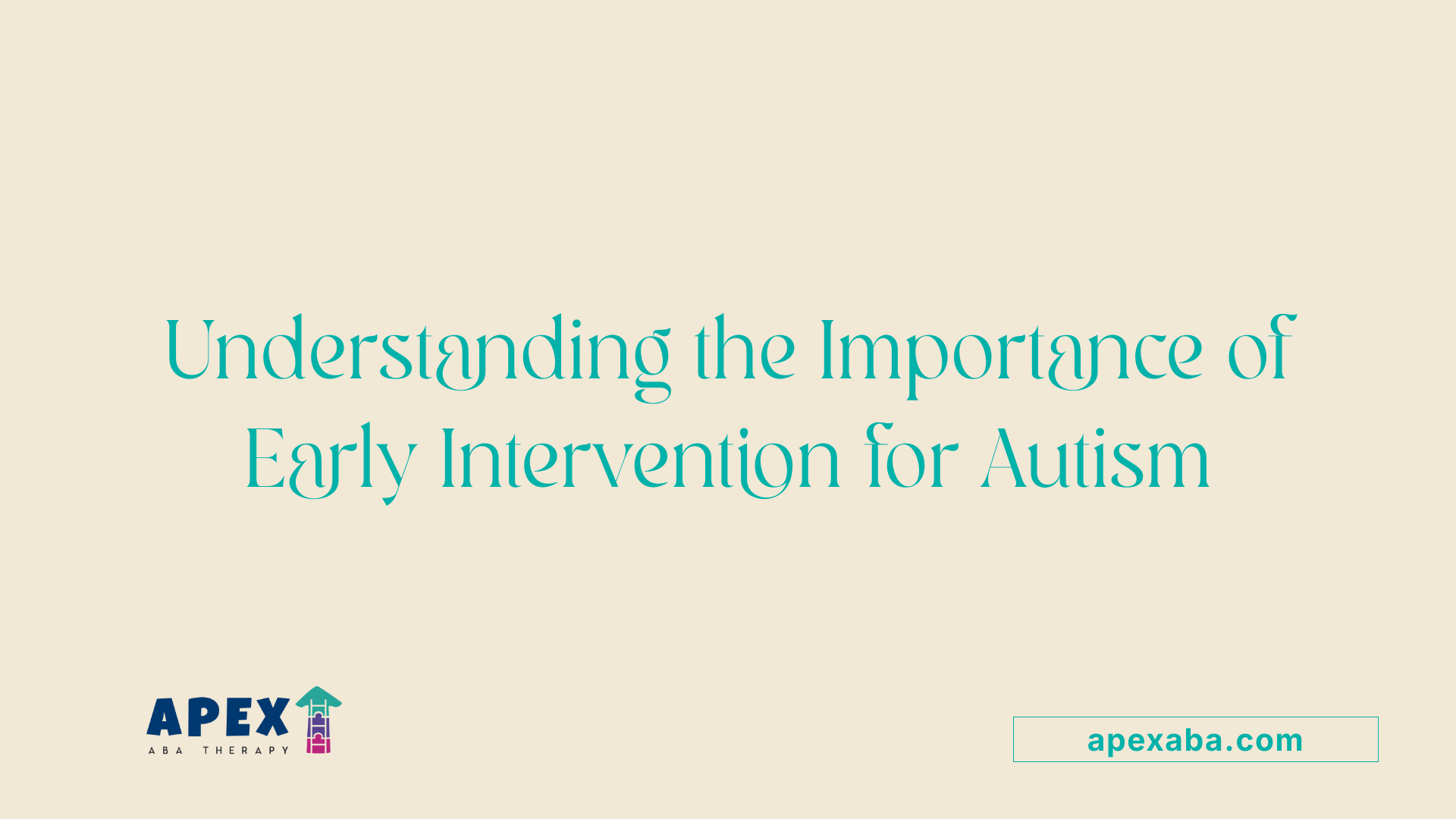
Why is early intervention important for autism?
Early intervention is crucial for children with autism, especially during the formative years. Studies indicate that a child's brain is highly plastic from birth to age five, making this period optimal for learning new skills and behaviors. Interventions targeting developmental deficits can significantly enhance cognitive and social abilities. For example, children receiving early intervention often show marked improvements in communication and social skills, which positively affect their ability to thrive in society.
Research highlights that interventions initiated as early as 18 months can set the stage for better long-term results. Innovative assessments aim to diagnose autism in infants, allowing for timely therapeutic support. Children who begin receiving services before two years old demonstrate not only immediate advantages but also long-lasting enhancements in quality of life.
Magnitude of improvements with early intervention
The potential benefits of early intervention are substantial. Data suggests children who partake in intensive therapy, like Applied Behavior Analysis (ABA), can experience IQ gains averaging 17 to 18 points. Additionally, early intervention facilitates improvements in social skills, communication abilities, and behavioral management, which contribute to smoother transitions into educational settings and greater success in adulthood.
A landmark study into the Early Start Denver Model (ESDM) revealed that around 14% of children who underwent two years of therapy no longer met the criteria for autism by age four, showcasing the profound impact early, targeted therapies can have.
Neuroplasticity and early brain development
Neuroplasticity plays a pivotal role in early intervention, as the child's brain is more adaptable and receptive to new learning experiences during these early years. This heightened plasticity means that interventions can create significant neural connections that foster skill development.
As caregivers implement strategies to improve social and communication skills in real-life contexts, children become more adept in navigating social dynamics and overcoming challenges. Consequently, addressing developmental delays promptly not only enhances day-to-day functioning but also lays down a stronger foundation for lifelong success.
Ideal Timing: When Should Early Intervention Begin?
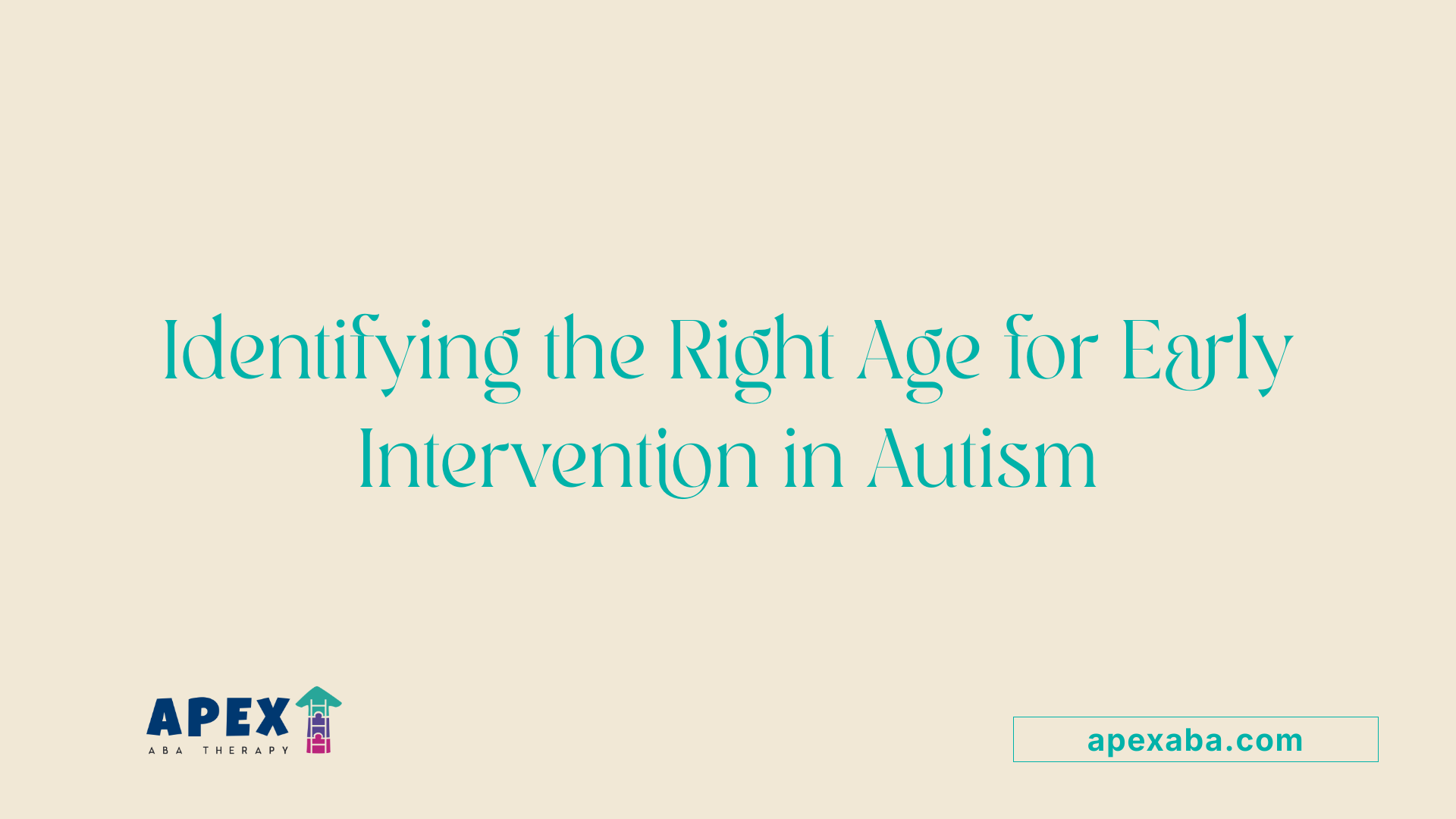
What age is suitable for early intervention for autism?
Early intervention for autism is generally recommended to begin as early as 18 months, with some approaches designed for children as young as 12 months. The American Academy of Pediatrics advises screening for autism at 18 and 24 months. Early identification is crucial as some children may show signs of autism before reaching the diagnostic age of two.
Research indicates that intervening during the critical developmental period, typically from birth to age three, leads to remarkable improvements in skills related to communication and social engagement. These early years are essential for brain development and establishing foundational skills.
Ultimately, early intervention is not only timely but directly associated with more favorable long-term outcomes for children with autism. Families suspecting developmental delays should pursue early evaluation to maximize the support their children receive.
Significance of early developmental milestones
Developmental milestones, such as communication and social interaction, are vital indicators of a child's growth. Recognizing delays as early as possible helps in capitalizing on the brain's neuroplasticity, enhancing learning and adaptability during formative years.
Research findings on age and intervention effectiveness
Studies show that children receiving early intervention at younger ages experience dramatically improved outcomes compared to those who start later. Interventions can lead to noticeable improvements in IQ, language abilities, and the mastery of social skills, paving the way for better integration into educational and social environments. Recent findings emphasize initiating therapy before age three significantly boosts these benefits, supporting the need for timely action.
Types of Early Intervention Therapies
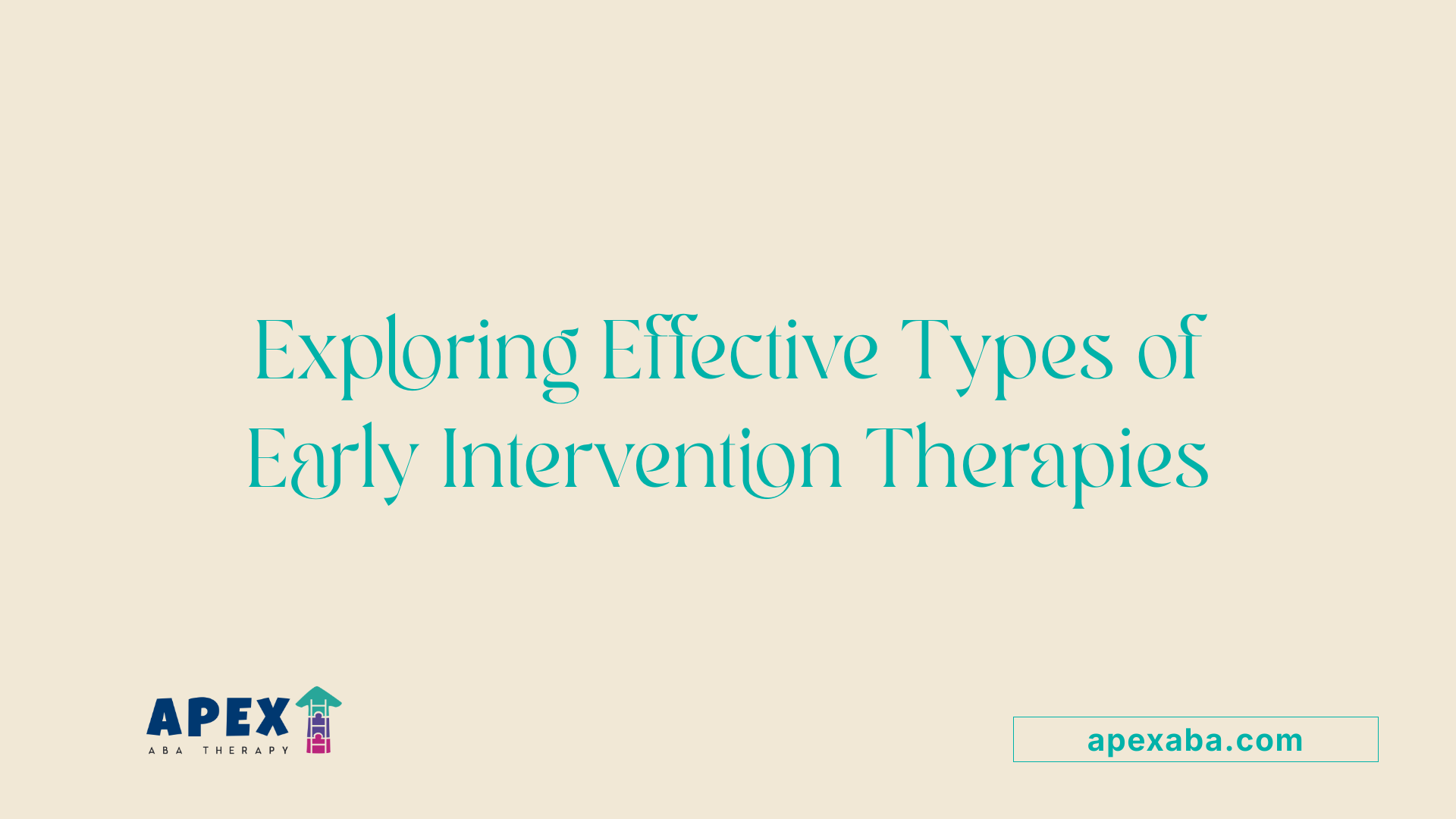
Overview of Intervention Strategies
Early intervention for autism consists of a variety of strategies designed to improve developmental outcomes for children on the spectrum. These interventions typically begin at or before age three and often draw upon evidence-based practices.
Role of Applied Behavior Analysis (ABA)
Applied Behavior Analysis (ABA) is one of the most recognized therapies for children with autism. It utilizes reinforcement techniques to encourage positive behaviors, helping children increase their communication and social interaction skills. ABA can effectively break down tasks into manageable steps, allowing children to learn in a structured manner. Studies demonstrate that intensive ABA can lead to significant improvements in cognitive and adaptive functioning levels.
Speech and Occupational Therapies
In addition to ABA, speech therapy is crucial in enhancing communication skills, helping children understand social cues, and effectively express themselves. Occupational therapy complements speech therapy by facilitating the development of daily living skills, such as self-care and play skills, fostering independence from a young age. Through these therapies, children can build essential skills that ensure they thrive in social settings and manage everyday challenges effectively.
| Therapy Type | Goals | Benefits |
|---|---|---|
| Applied Behavior Analysis | Reinforce positive behaviors; improve communication and social skills | Enhanced cognitive functioning; better adaptive skills |
| Speech Therapy | Improve verbal communication and comprehension; teach social cues | Better social interaction; increased verbal expression |
| Occupational Therapy | Develop life skills; enhance self-care and daily functioning | Greater independence; improved adaptability |
These intervention strategies play pivotal roles in addressing the diverse needs of children with autism, leading to improved long-term outcomes.
Implementing Therapy at Home: A Parental Guide

What is the process of early intervention for autism at home?
The process of early intervention for autism at home entails a range of therapeutic approaches that parents can effectively utilize. Key methods include play therapy, speech therapy, Applied Behavior Analysis (ABA), Floortime, Relationship Development Intervention (RDI), and Parent-Child Interaction Therapy (PCIT).
Parents have the flexibility to tailor these therapies to address their child's specific needs, thereby promoting critical skills such as:
- Communication: Encouraging verbal and nonverbal expression.
- Social Interaction: Fostering friendships and peer engagement.
- Emotional Engagement: Helping children recognize and express their feelings.
A structured and predictable environment is essential for the success of these interventions. Parents should enhance the learning experience by integrating therapy techniques into daily activities, making use of engaging technology when appropriate.
Strategies for creating a supportive home environment
Creating a supportive home environment involves several practical strategies. These include:
- Establishing daily routines to create a sense of security.
- Using visual supports (like schedules or charts) to aid communication.
- Providing sensory tools that cater to your child's individual sensory needs.
- Designing interactive playtime that encourages social skills and cooperative play.
Examples of successful home interventions
Successful home interventions can take various forms. For instance:
- Interactive Storytime: Reading books that promote themes of friendship and emotions, allowing discussion afterward.
- Structured Play Sessions: Engaging the child in games that encourage turn-taking and sharing.
- Speech Building Activities: Implementing simple tasks like naming objects around the house during daily routines.
Overall, effective early intervention at home significantly boosts a child's developmental progress while nurturing a positive family dynamic.
Evaluating the Impact of Early Autism Therapies
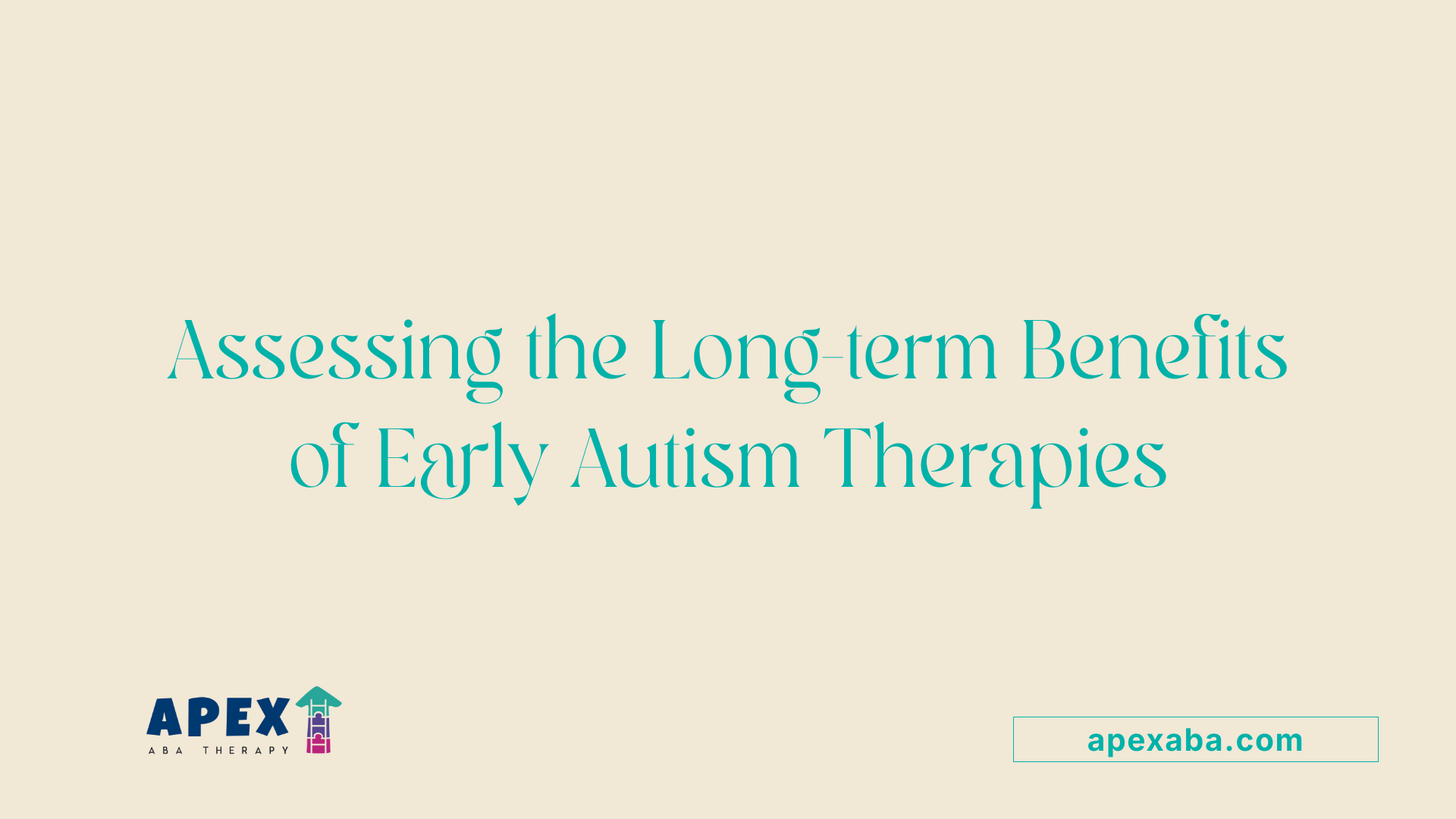
How effective is early intervention for autism?
Early intervention for autism is highly effective and can lead to significant long-term benefits for children diagnosed with Autism Spectrum Disorder (ASD). Research indicates that interventions beginning as early as 2 or 3 years old can substantially enhance critical developmental skills such as communication, socialization, and behavior. This is particularly important during the first few years of life, when neuroplasticity—the brain's ability to adapt and form new connections—is at its peak.
Evidence from research studies
Studies like the Early Start Denver Model (ESDM) highlight the effectiveness of early therapeutic approaches. ESDM integrates techniques from Applied Behavior Analysis (ABA) with developmental strategies, focusing on promoting social and communication skills through structured, play-based activities. Children enrolled in these programs exhibited remarkable improvements in IQ, language abilities, and social interactions. For instance, research has shown an average IQ increase of around 18 points, underscoring the immediate impact of timely interventions.
Examples of long-term benefits
The benefits of early intervention extend into later life as well. Children who receive early therapeutic support demonstrate better educational outcomes, are more likely to be integrated into regular education settings, and often achieve improved employment prospects. Furthermore, early interventions promote the development of independence, as children learn essential daily living skills from a young age. Such gains illustrate how targeted therapies not only enhance short-term competencies but also build a foundation for successful adult lives.
Comparative success of various intervention models
When evaluating different intervention models, research supports that higher intensity treatment, such as ABA, correlates with better cognitive and behavioral outcomes. Programs that provide continuous, focused support yield more favorable results than less intensive strategies. The overall consensus in the research community emphasizes that early, intensive intervention tailored to individual needs is crucial for achieving the best outcomes for children with autism.
The Lifelong Impact of Early Autism Intervention
The benefits of early intervention in autism therapy extend beyond immediate developmental gains, paving the way for improved long-term outcomes, independence, and quality of life for autistic individuals. By initiating these therapies at a young age, parents and caregivers can enhance a child's potential to integrate into society, perform in academic settings, and establish meaningful relationships. As research continues to underscore the importance of early intervention, it remains a pivotal factor in maximizing life outcomes for children with ASD, offering hope and a promising future for affected families worldwide.
References
- Importance of Early Intervention for Kids with Autism
- 5 Benefits of Early Intervention for Autism - LEARN Behavioral
- Study Finds Early Intervention Highly Effective | Autism Speaks
- Importance of Early Intervention in Reducing Autistic Symptoms and ...
- 8 Benefits of Early Intervention for Autism
- Why is Early Intervention for Autism So Important?
- The Importance of Early Intervention for Autism - Maxim Healthcare
- Early Intervention - UNC Autism Research Center
- The Importance of Early Intervention for Autism Spectrum Disorder
- Early Intervention in Autism: How Important Is It?

The Role of Positive Reinforcement in ABA Therapy
Exploring the Impact of Positive Reinforcement in Modern ABA Therapy

Why ABA Therapy is Effective for Children of All Ages
Understanding the Reach and Impact of ABA Therapy Across Age Groups

How to Support Your Child’s Emotional Growth with ABA Therapy
Harnessing ABA Therapy for Enhancing Emotional Development in Children with Autism

The Role of ABA Therapy in Enhancing Peer Relationships for Children with Autism
Harnessing ABA Therapy to Boost Social Connections Among Autistic Children

How to Overcome Common Challenges in ABA Therapy
Navigating Hurdles in ABA Therapy: Strategies and Solutions

How to Manage Behavioral Expectations with ABA Therapy
Understanding Applied Behavior Analysis in Behavioral Management

How ABA Therapy Promotes Emotional Regulation in Children with Autism
Unlocking Emotional Balance: ABA Therapy's Role in Autism

How ABA Therapy Improves Social Skills in Children with Autism
Harnessing ABA Therapy to Enhance Social Competency in Autistic Children

The Role of ABA Therapy in Classroom Success for Children with Autism
Harnessing ABA for Academic and Social Growth in Autism

The Importance of Evaluating and Revising ABA Therapy Goals Regularly
Regular Evaluations: The Cornerstone of ABA Therapy Success

How to Choose the Right ABA Therapy Program for Your Child
Finding the Perfect ABA Therapy Fit for Your Child

The Role of Behavior Analysts in Implementing ABA Therapy
Understanding the Vital Contributions of Behavior Analysts in ABA Therapy

The Role of RBTs (Registered Behavior Technicians) in ABA Therapy
A Closer Look at the Essential Work of RBTs in ABA Therapy

What Makes ABA Therapy Effective for Different Learning Styles?
Unraveling the Flexibility and Effectiveness of ABA Therapy

Understanding the Importance of Data Collection in ABA Therapy
The Role of Data in Shaping Effective ABA Therapy

How ABA Therapy Helps with Toilet Training in Children with Autism
Unlocking Independence: ABA's Role in Autism Toilet Training

The Importance of Encouraging Natural Play in ABA Therapy
Revolutionizing ABA Therapy with Natural Play

How to Make the Most of ABA Therapy at Home
Enhancing ABA Therapy Practices Within Your Home

How to Make ABA Therapy Fun and Engaging for Children with Autism
Transforming ABA Therapy into a Fun Learning Journey

The Role of ABA Therapy in Addressing Verbal and Nonverbal Communication in Autism
Enhancing Communication Skills in Autism Through ABA Therapy

Understanding the Role of Family in ABA Therapy for Autism
The Crucial Impact of Family Engagement in Autism Therapy

How to Handle Setbacks and Challenges in ABA Therapy
Navigating Difficulties and Setbacks in ABA Therapy for Children

How ABA Therapy Can Help Children Build Stronger Relationships with Peers
Unpacking the Influence of ABA Therapy on Peer Relationships in Children

Understanding the Concept of Shaping in ABA Therapy
Demystifying Shaping Techniques in Applied Behavior Analysis

How ABA Therapy Enhances Independent Living Skills in Autism
Unlocking Independence: The Role of ABA Therapy in Autism
.jpg)
90+ Reading Statistics, Facts and Demographics
In this article, we will dive into 60 reading statistics that shed light on the importance of reading and its impact on different aspects of life.

How ABA Therapy Can Help Children with Autism Make Better Choices
Unlocking Autistic Children's Potential with ABA Therapy

How ABA Therapy Helps Children with Autism Adapt to New Environments
The Adaptive Benefits of ABA Therapy for Autism

What Does the Research Say About the Effectiveness of ABA Therapy?
Exploring the Role and Research Behind ABA Therapy

How to Create an Effective ABA Therapy Plan for Your Child
Guiding Parents Through Effective ABA Therapy Planning

The Long-Term Benefits of Consistent ABA Therapy for Children with Autism
Unlocking Potential: Consistent ABA Therapy for Autism

Why ABA Therapy Should Be Tailored to Each Child’s Unique Needs
The Necessity of Customizing ABA Therapy for Unique Child Development

What are the Different Types of ABA Therapy?
Exploring the Varieties of ABA Therapy for Autism and Beyond

How ABA Therapy Can Improve Functional Skills in Children with Autism
Unlocking the Potential: ABA Therapy for Autistic Children

How ABA Therapy Facilitates Peer Interaction for Children with Autism
Understanding the Impact of ABA Therapy on Autism and Peer Relationships

The Importance of Early Intervention in Autism Therapy
Unlocking Potential: The Crucial Role of Early Intervention in Autism

The Role of ABA Therapy in Creating Healthy Habits for Children with Autism
Understanding How ABA Therapy Shapes Daily Life for Autistic Children

How to Create a Supportive Environment for Children Undergoing ABA Therapy
Crafting a Nurturing Space for Effective ABA Therapy

The Benefits of Incorporating Technology into ABA Therapy
Harnessing Technology for Enhanced ABA Therapy Outcomes

How ABA Therapy Helps with Stereotypic Behavior in Autism
ABA Therapy: Transforming Stereotypic Behaviors into Meaningful Interactions in Autism

What to Expect in an ABA Therapy Program for Children with Autism
Understanding ABA Therapy for Kids with Autism

How to Create a Positive Home Environment for Children Under ABA Therapy
Cultivating a Therapeutic Space for ABA Success

How ABA Therapy Can Improve Safety Awareness in Children with Autism
Empowering Safety through ABA Therapy for Kids with Autism

The Link Between ABA Therapy and Improved Academic Performance in Children with Autism
Exploring the Profound Impact of ABA on Autism-Related Educational Success

The Benefits of Early ABA Intervention for Toddlers with Autism
Unveiling the Power of ABA for Toddlers with Autism

How ABA Therapy Promotes Independence and Life Skills Development
Unlocking Independence: The Role of ABA Therapy in Life Skills Development

How to Deal with the Emotional Impact of ABA Therapy on Parents
Navigating Emotions: Support Tips for Parents in ABA Therapy

The Role of ABA Therapy in Reducing Meltdowns in Children with Autism
Exploring the Power of ABA in Emotional Management for Kids with Autism

How ABA Therapy Addresses Noncompliance and Defiance
Unlocking Compliance and Resolving Defiance with ABA Techniques

How to Address Communication Barriers in ABA Therapy for Nonverbal Children
Strategies to Enhance Communication in Nonverbal Children with Autism

How to Implement ABA Strategies at Home for Continued Success
Creating a Successful ABA Environment at Home

How ABA Therapy Helps Children with Autism Build Self-Esteem
Building Confidence in Children with Autism Through ABA Therapy

The Benefits of ABA Therapy for Children with Autism
Understanding the Positive Impact of ABA Therapy for Autism

Why ABA Therapy Works for a Variety of Behavioral Issues in Children
Exploring the Versatile Impact of ABA Therapy on Children's Behavior

How ABA Therapy Helps with Self-Care Skills in Autism
Unlocking Independence Through ABA: Fostering Self-Care Skills in Autism

The Impact of ABA Therapy on Siblings of Children with Autism
Understanding the Role of ABA Therapy in Family Dynamics

Why Do Autistic People Wear Headphones?
Discover the heartfelt reasons behind why autistic individuals choose to wear headphones. It's not just about tuning out noise – it's a personal coping mechanism, providing comfort and control in a world that can be overwhelming.
.jpg)
Who Can Diagnose Autism?
In this article, we will help you understand the professionals involved in diagnosing autism and what to expect during the diagnosis process.
.jpg)
When Is Autism Diagnosed?
A comprehensive evaluation that includes a medical history, observation of the child's behavior, and developmental assessments can help diagnose this complex disorder
.jpg)
What Is The Autism Spectrum Disorder?
A closer look at this diverse range of developmental conditions. Understand what ASD is, how it impacts individuals, and why embracing this unique spectrum is key to fostering inclusivity and support.
.jpg)
What Is Autism? Everything You Need To Know
Autism is a disorder that affects a lot of people around the world. It's called a spectrum disorder because it affects people differently.
.jpg)
What are Disability Benefits for Autism?
There are disability benefits available for those with autism to help them live a more comfortable life. In this article, we will discuss disability benefits for autism in detail.

Ways to Build Confidence in Autistic Children
Discover effective ways to build confidence in autistic kids and create supportive environments for growth.

Using Technology for Autism Support
Unlocking support for autism through technology! Explore communication tools, VPN benefits, decision-making aids, and motivating apps.
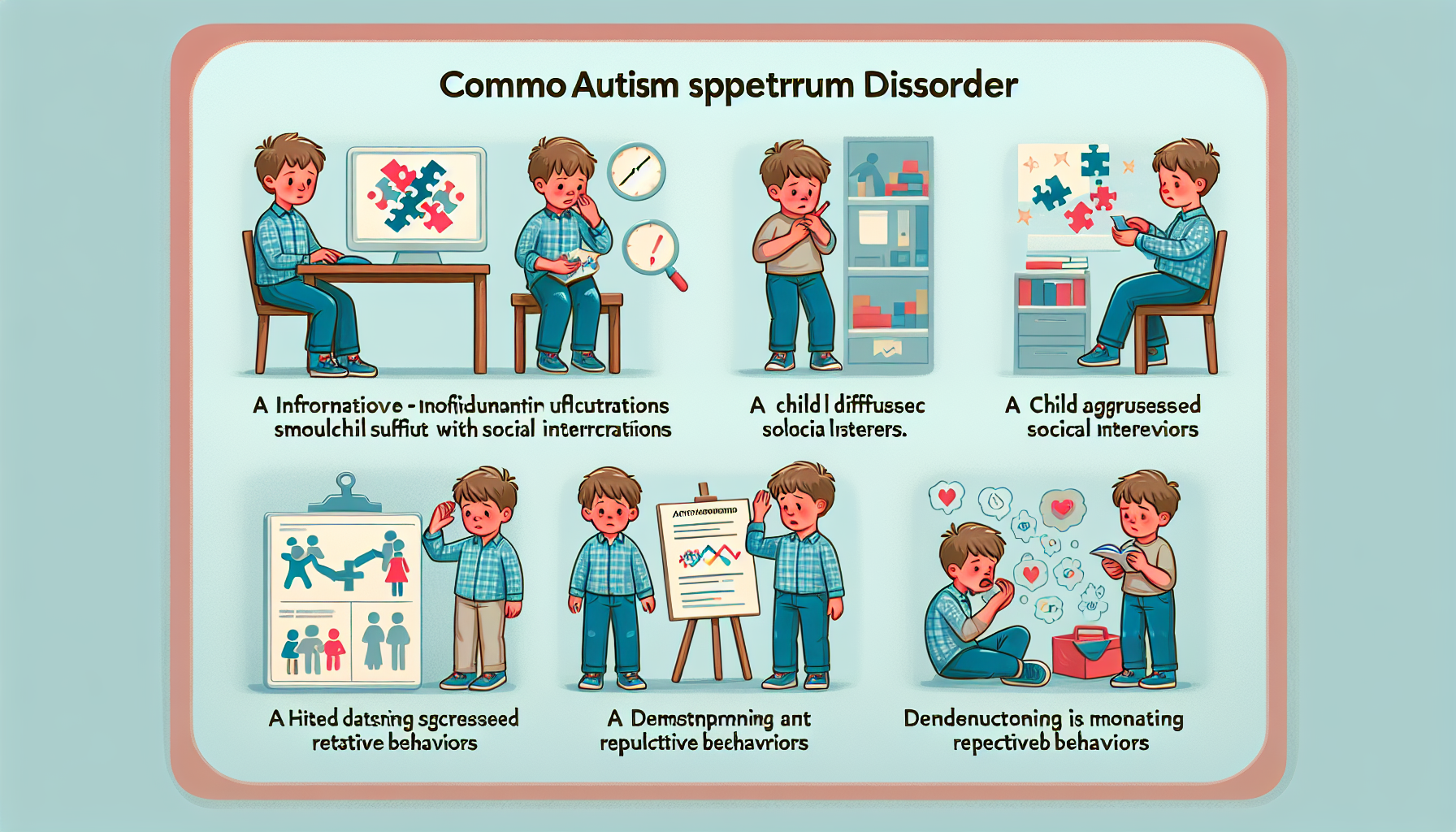
Unveiling Common Symptoms of Autism
Unlock the code of common symptoms of autism. Discover early signs, social challenges, and the importance of early detection.
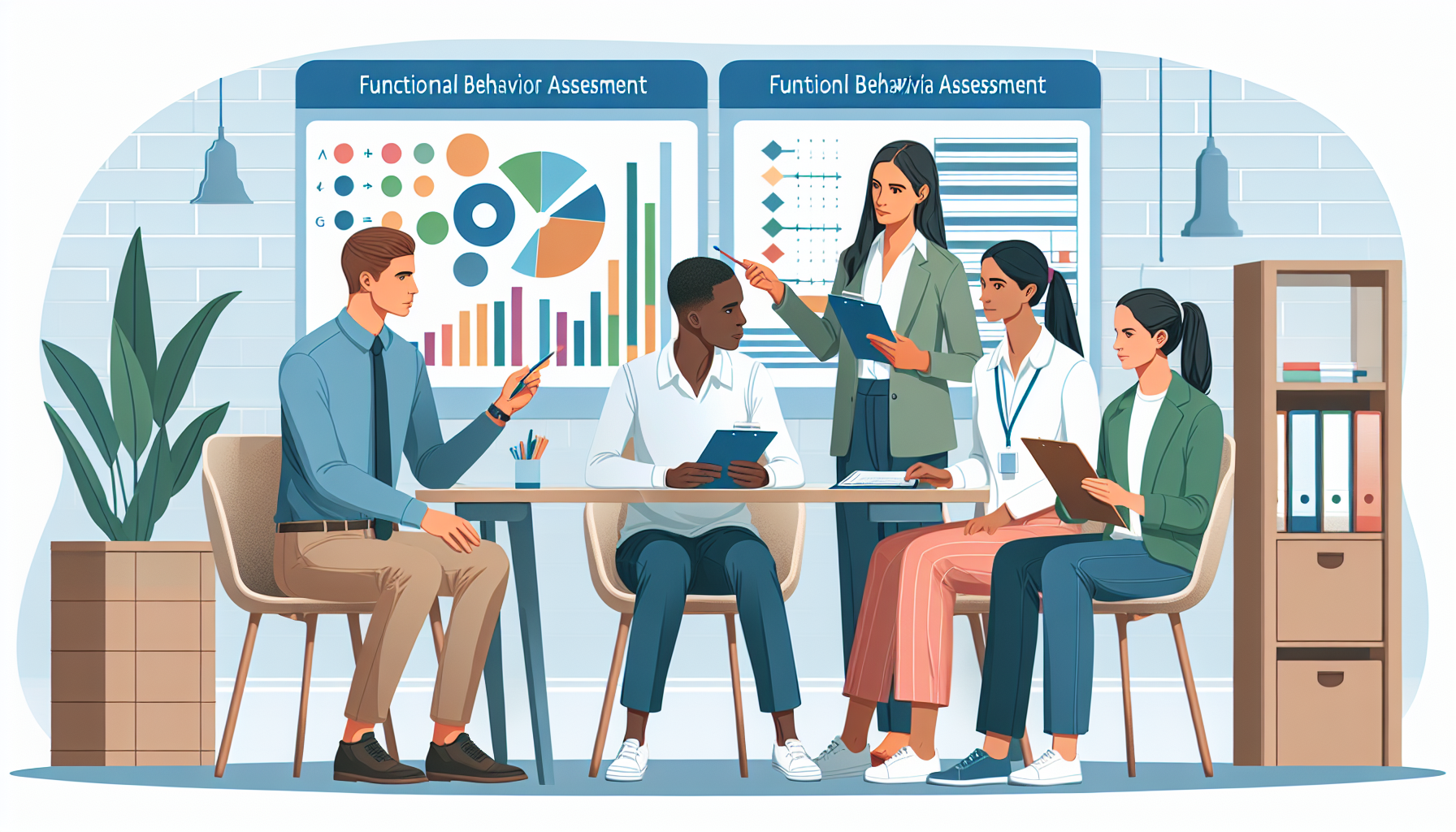
Understanding Who Can Conduct a Functional Behavior Assessment
Discover who can conduct a functional behavior assessment. From BCBAs to licensed psychologists, get expert guidance today!

Understanding the Work of a Behavior Technician
Unlock the mystery of behavior technicians! Discover their role, skills, and the benefits of certification. Explore now!

Understanding the Blood Test for Autism During Pregnancy
Unlocking early autism detection during pregnancy with a game-changing blood test. Learn about its accuracy, benefits, and ethical considerations.

Understanding Autism Severe Behavior Problems
Understanding autism severe behavior problems and effective treatment approaches for managing them. Discover strategies to navigate challenges.
.jpg)
Understanding Autism in Women: Key Facts
While autism is often diagnosed in early childhood, it is not uncommon for women to be diagnosed later in life or not at all. In this blog post, we will explore the facts surrounding autism in women.

Types Of Therapy For Autism
Uncover empathetic insights, and the varied approaches that make up the tapestry of support for individuals on the spectrum. Join us in this exploration, shedding light on the human side of therapy for autism—where each method is a unique journey, and every success story adds depth to our understanding.
.jpg)
Tips for Parents Navigating the Unknown in Autism
With so much information out there, it can be overwhelming to know where to start or what to do. In this article, we will provide you with some tips for navigating the unknown in autism so that you can better support your child and your family.

The Truth Behind ABA Therapy: 10 Facts You Need to Know
Discover the truth behind ABA therapy! Get the facts you need to know about this effective treatment for individuals with ASD.

The Relationship Between Autism Spectrum Disorder and Vaccines
Unveiling the truth about autism spectrum disorder and vaccines: separating fact from fiction to promote understanding and immunization.

The Power of Functional Behavior Assessments
Uncover the power of functional behavior assessments and their impact on behavior improvement and student development. Discover what a functional behavior assessment is.

The Language of Needs: Decoding Manding in ABA Therapy
Unlock the power of manding in ABA therapy! Discover the language of needs and its impact on positive outcomes.

The Genius Within: Embracing Intelligence in Autism
Discover the brilliance of autism! Debunking myths and celebrating the intelligence within the spectrum.

The Autism-Hyperactivity Debate: Examining the Relationship
Unraveling the autism-hyperactivity debate: Does autism cause hyperactivity? Discover the complex relationship and shared neurobiological substrates.

Strategies for High-Functioning Autism Eye Contact
Unlock Effective Communication with High-Functioning Autism Eye Contact Strategies. Enhance Social Interactions and Understanding.
%20(1).jpg)
Standardized Autism Interventions
In this article, we will take a closer look at what standardized autism interventions are and how they can help individuals with autism.

Shaping Futures: The Promise of ABA Therapy for ADHD
Discover the power of ABA therapy for ADHD: Effective strategies, tailored treatment plans, and the role of parental involvement.

Promoting Autism and Community Inclusion
Break barriers, embrace inclusion! Discover the power of community integration for individuals with autism.

Parent Tips for Success with ABA Therapy
Discover parent tips for ABA therapy success and support your child’s journey with friendship and guidance!

Noteworthy Signs You Are on the Spectrum
Unlocking the truth: Discover subtle signs you might be on the spectrum. Gain insights and understanding.

Navigating the Options: When is ABA Therapy the Right Choice?
Discover when ABA therapy is the right choice! Explore effectiveness, age considerations, and goal setting for optimal outcomes.

Navigating the ABA Therapy Age Limit
Navigate the age limit for ABA therapy and unlock limitless potential for effective treatment.

Navigating Autism Spectrum Disorder: Is Autism Natural?
Navigate autism spectrum disorder with understanding and support. Learn about causes, diagnosis, treatment options, and improving quality of life.

Navigating Autism and Intersectionality
Unlocking the power of intersectionality in understanding autism. Explore the experiences and challenges faced by autistic individuals.

Navigating ABA Therapy: Must-Ask Questions for Parents
Discover the must-ask questions about ABA therapy, empowering parents in their journey of understanding and support for their child with autism.

Most Common Mental Disorders in Autism
Uncover the Most Common Mental Disorders in Autism. Explore Anxiety, Depression, ADHD, and More. Gain Insights for Comprehensive Care.
.jpg)
Mild Autism: Definition And Characteristics
Mild autism, also known as high-functioning autism, is a term used to describe individuals on the autism spectrum who have fewer and milder symptoms than those with classic autism.
.jpg)
Medication For Autism: Understanding The Benefits And Risks
In this blog post, we'll explore the different types of medication used to treat autism, their benefits and risks, and what you need to know if you're considering medication for your child or loved one with autism.
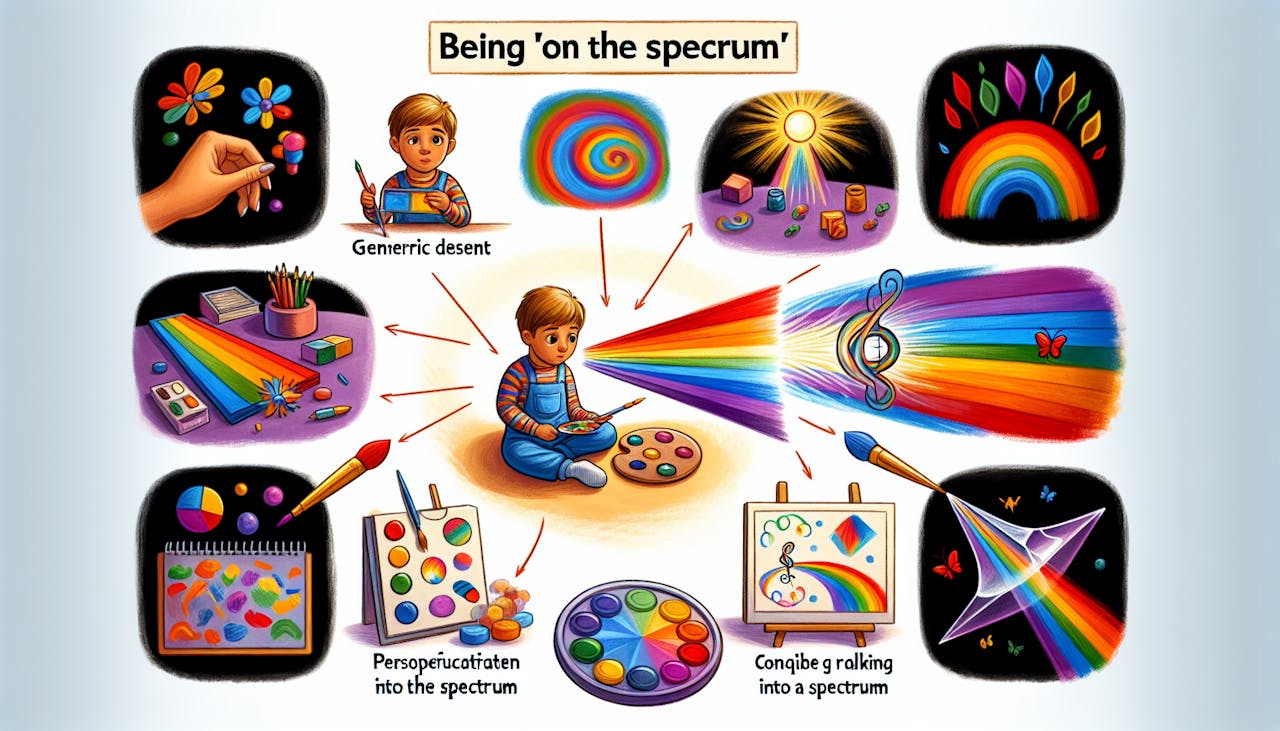
Mastering the Spectrum: Understanding What it Means for a Child
Unraveling the spectrum: What does "on the spectrum" mean for a child? Gain insights into understanding and supporting children with ASD.

Mastering Behavior Analysis: Unveiling the Best ABA Graduate Programs
Discover the best ABA graduate programs to excel in applied behavior analysis. Unveil your potential today!

Managing Sensory Modulation Disorder: Empowering Autistic Individuals
Discover how sensory modulation disorder impacts individuals with autism. Explore symptoms, treatments, and support options for a better understanding.
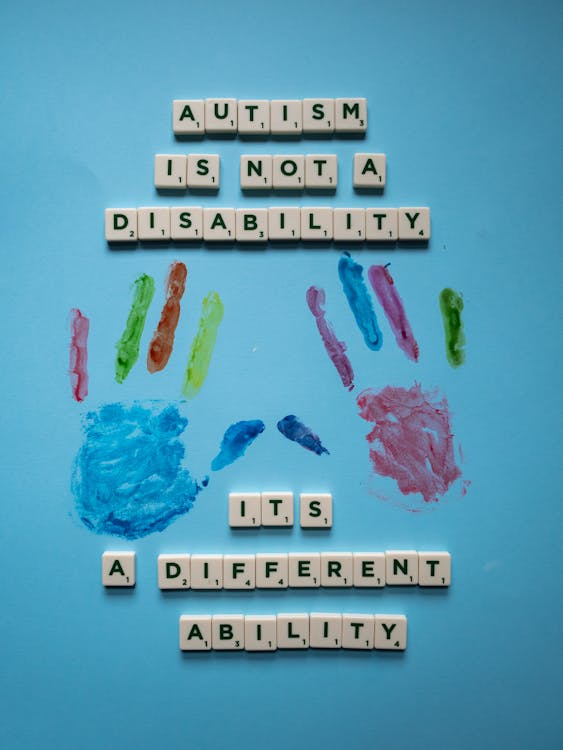
Key Facts About Autism Spectrum Disorder
Unveil key facts about autism spectrum disorder and empower your knowledge on diagnosis, treatment, and living with ASD.
.jpg)
Is Barron Trump Autistic?
Barron Trump, the youngest son of former President Donald Trump and First Lady Melania Trump, has been the subject of much speculation on social media over the years. One of the most frequent questions that people ask about him is whether he is autistic.
.jpg)
Is Autism Genetic? Role of Genetics in Autism
One question that many people ask is whether autism is genetic. In this article, we'll explore the role of genetics in autism spectrum disorder and what current research has to say about it.

Is Autism A Disability?: Dismantling Stigmas
Delve into the diverse world of autism, recognizing unique strengths and challenges. Uncover the broader conversation about neurodiversity and inclusion, aiming for a society that embraces differences and creates opportunities for all.
%20(1).jpg)
Interventions For Autism: The Ultimate Guide
While there is no cure for autism, early intervention can significantly improve a child's developmental outcomes. In this blog post, we will explore some of the most effective interventions for autism.

